![]()
![]()
![]()
Use LEFT and RIGHT arrow keys to navigate between flashcards;
Use UP and DOWN arrow keys to flip the card;
H to show hint;
A reads text to speech;
28 Cards in this Set
- Front
- Back
|
Physical Exam |
Distant methods |
|
|
|
- Temperature |
|
|
|
Stress
|
|
|
Distant Exam |
- Demeanour |
|
|
Close Exam |
Look = Observation Touch = Palpation |
|
|
Close Exam |
- Head exam & palpation |
|
|
MM Colour |
Normal |
|
|
MM Capillary Refill Time (CRT) |

Usually <2 sec |
|
|
Head Position |
Head tilt
|
|
|
Nose |
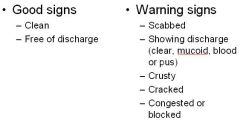
|
|
|
Eye Exam
|
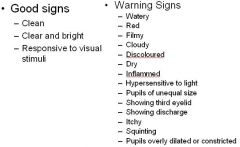
|
|
|
Ear Exam |
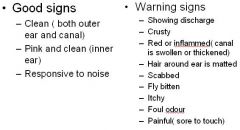
|
|
|
Skin Turgor |
Some vets actually count the seconds for skin to return to normal position |
|
|
Temperature
|
Lubricated thermometer
|
|
|
Temperature interpretations |
High temp
|
|
|
Normal Temp |
Normal dog & cat 37.8 - 39.2 C
|
|
|
Heart Rate |
Count what? Pulse (femoral) |
|
|
Breathing / Respiration |
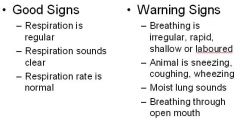
|
|
|
Respiration Rate |
Polypnoea Dyspnoea
|
|
|
Appetite |
Hyporexia
|
|
|
Urination |
Dysuria
|
|
|
Defecation |
|
|
|
Abnormal movement |
Ataxia
|
|
|
Signs of pain |
Absence of normal behaviour |
|
|
Legs / Feet |
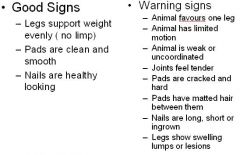
|
|
|
Anal / Genital |
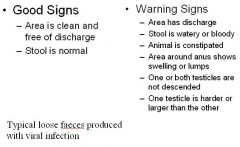
|
|
|
Good signs |
Animal is bright alert and responsive
|
|
|
Overall Warning signs |
Animal is thin or obese |

